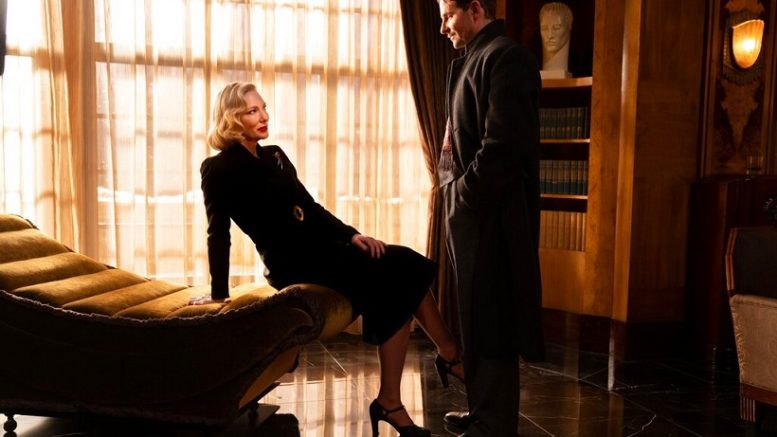The Associated Press
A title like “ Nightmare Alley,” especially when paired with a filmmaker like Guillermo del Toro, suggests a certain kind of movie. Del Toro, the director of “The Shape of Water” and “Pan’s Labyrinth,” has a signature style after all.
But “Nightmare Alley” is not about a haunted house or the supernatural. It’s a noir that’s rooted in a recognizable, if heightened, reality about the brief rise of a handsome hustler from low-level carney to highly paid showman. And it is a decadent feast, in its scope, length, star power, and production quality, as well as an exciting departure for del Toro.
Classic film fans may recognize the title for its significance in the career of Tyrone Power. The 1947 film, directed by Edmund Goulding, was a passion project for Power, who wanted to play something darker than the romantic swashbucklers that made him a star. Critically it worked — he got the best reviews of his career — but it was a bust financially. And though it might be a classic to the TCM and Criterion Channel (where it’s currently streaming) crowd, it’s not something that a casual movie fan would be expected to know.
Even a cinephile like del Toro came across the book first, a ground floor tale of showbiz sleaziness and the strange types it attracts. Ron Perlman, who plays the carnival strongman Bruno, gave it to him almost 30 years ago. And with the help of co-writer Kim Morgan (a wonderful film historian), they have refined and polished a B-movie story into a savory A-list joint, with Bradley Cooper in the lead as the brilliant and tragic Stanton Carlisle. Though Cooper doesn’t have a typecasting problem at this stage in his career (he’s made sure of it), Stan is one of those irresistible roles no matter how you cut it, an enigmatic, manipulative charmer, whose intelligence and ambition is his saving grace and Achilles’ heel.
Stan may be introduced like Indiana Jones, fedora tipped down while lighting a match, but you know this guy is no hero. Even so, you kind of like him as he stumbles onto a carnival fairground in the late 1930s and quickly goes from trespasser to confidant of some of the top acts. He gets in with the owner (Willem Dafoe), cozies up to a seer, Zeena (Toni Collette), and her alcoholic husband Pete (David Strathairn) learning the tricks of their trade, and endears himself to a pretty performer, Molly (Rooney Mara).
The carnies are all just stepping stones to something grander, however, and pretty soon we’re in what feels like a different and more glamorous movie as Stan and Molly take their mentalist act to the big city. It’s there that they meet Cate Blanchett’s psychiatrist Dr. Lilith Ritter, a classic femme fatale oozing elegance and whiskey, and start to get in over their heads. Special mention should be given to production designer Tamara Deverell, art director Brandt Gordon, set decorator Shane Vieau and costume designer Luis Sequeira who build out two ravishing cinematic worlds — one of post-depression filth and squalor and the other of deco splendor.
The themes are similarly grand: There is a lot of talk of good and bad, playing God, responsibility, money, and loyalty in, and an ever-present fear of the fall. Stan knows what the bottom looks like, and an obsession with avoiding that will keep him clawing his way up. The themes are obvious and a bit old-fashioned and the trajectory is too. But that’s not a ding: It’s just a neatly constructed story that stays true to its genre and time. And hopefully, it’s not the last time Morgan and del Toro revive a hidden gem.
“Nightmare Alley,” a Searchlight Pictures release in theaters Friday, is rated R by the Motion Picture Association of America for “some sexual content, nudity, language, and strong/bloody violence.” Running time: 150 minutes. Three stars out of four.




































